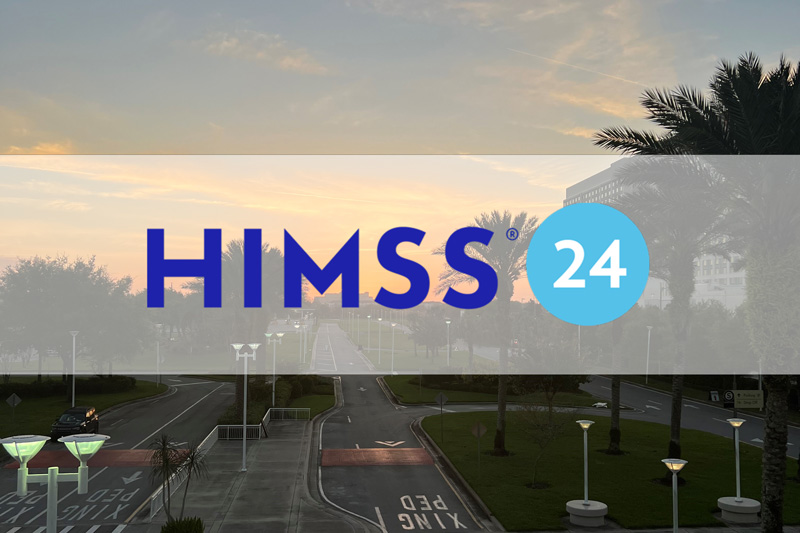Burnout is a significant problem on the rise in healthcare. With growing demands for care due to the COVID-19 pandemic and severe staffing shortages, healthcare providers and staff have faced an increased workload. The strained healthcare system is leaving hospital workers feeling increasingly overwhelmed, stressed, and even physically ill—all symptoms of burnout. A recent Mayo Clinic study found that 63 percent of surveyed physicians reported at least one symptom of burnout.
This is bad news for individual staff well-being, but it also translates into serious financial consequences for hospitals. For example, a recent study shows that $260 million annually is attributable to burnout-based turnover of primary care physicians. In a recent survey by the American College of Healthcare Executives (ACHE), 80% of hospital CEOs reported staff burnout as a serious challenge affecting the healthcare workforce—and hospital’s bottom lines.
To help combat this crisis, hospitals should consider addressing the solution from multiple angles. Well-being and emotional support programs for physicians can be useful tools, but to respond to the issue most effectively, hospitals need to take a big-picture approach. Examining operational data trends on staffing, resource allocation, and administrative burden will enable healthcare systems to take an informed path toward solving burnout. Read more for three ways that hospital leaders can fight burnout in healthcare using analytics.
Monitor staffing trends with data solutions
In a recent survey by Kaufmann Hall, 66% of hospitals and health systems reported running at less than half capacity due to staffing shortages. To best resolve shortages and support existing staff, healthcare executives need timely data on staffing metrics. Analytics on staffing measures can equip hospital administration with critical insight into how to improve employee well-being and prevent burnout. Some measures that hospital leaders should closely monitor include:
- Collecting data on staff turnover, which allows hospitals to intervene to support staff at the highest risk of quitting and to forecast future hiring needs
- Examining department-specific retention rates to see which areas need the most attention
- Analyzing patterns in staff callouts, to address which departments may benefit from additional staffing support
The Kaufmann Hall survey recommends that hospitals integrate analytics technology to “help optimize alignment of staff to demand, reducing the need for overtime or agency use while ensuring appropriate staffing based on care model requirements.” By utilizing an enterprise analytics platform that collects, analyzes, and reports on clinical staffing-related measures, healthcare leaders can access data-driven insights to enhance the well-being of staff. At Dimensional Insight, we’ve attempted to address healthcare staffing challenges by offering data solutions that display need-to-know metrics on physician practice patterns. By leveraging timely, robust data on personnel patterns, hospitals can find ways to effectively support existing staff and fulfill future hiring demands.
Use analytics to improve resource allocation
When hospital resources are stretched thin, staff and physicians can reach their breaking point. In a recent survey, 11% of employees reported leaving their organization due to inadequate resource accessibility. When healthcare leadership ensures that resources are allocated appropriately, hospitals can run more efficiently from a clinical, financial, and operational perspective.
Improved resource allocation eases unnecessary burdens on staff, giving them the tools they need to best perform and serve their patient population. So, how can healthcare executives ensure that resources are best managed to support their staff? Critical analysis of clinical operations data can offer a deeper understanding of how to optimize hospital and employee performance. Some ways that hospital leaders can use analytics to improve resource allocation include:
- Tracking admissions and census to provide a clear picture of hospital-wide staffing needs
- Optimizing patient flow and discharge management, resulting in better allocation of staff resources
- Examining data trends to identify high-traffic, high-stress areas of the hospital and provide extra well-being support to the staff in those departments
To streamline workflow and ease staff burdens, hospitals should consider using high-performance analytics solutions to track resource allocation. When hospitals are able to access timely clinical metrics such as census, admissions, and case mix they can improve operational efficiency for busy staff. Solutions like Dimensional Insight’s Diver Platform, provide real-time access to a variety of key performance indicators around hospital operations. In addition to census and admissions trends, a strong analytical platform can help track staffing-related measures such as hours worked, overtime, and total FTEs. Bringing together previously siloed data from stand-alone clinical and financial systems into one unified analytics software can streamline operations and improve workflow. With the use of powerful analytical solutions, hospital leaders can be better equipped to assess and resolve patterns that may lead to staff burnout.
Reduce administrative burden with analytics
Administrative burden can be a major contributor to burnout, as physicians often spend numerous hours toiling with non-intuitive EHR systems. A study from the Yale School of Medicine found that the “usability of current EHR systems received a grade of ‘F’ from physician users” and that EHR usability dissatisfaction strongly correlates with burnout. Streamlining EHR-related clerical tasks can increase efficiency and reduce unnecessary workload.
Efficient clinical analytics solutions that complement EHR systems have the potential to ease physicians’ workloads and mitigate the risk of burnout. Hospitals should consider an analytics platform that integrates seamlessly with EHRs, providing enhanced interoperability, consistent enterprise-wide data, and access to real-time reporting. Dimensional Insight attempts to address this challenge by quickly extracting and translating EHR data, to save valuable time and reduce administrative burdens for busy clinicians. Self-service dashboards, like Dimensional Insight’s Diver Platform, can enable up to a 90% reduction in the time spent analyzing data and some hospitals using the platform have even reported a 20% reduction in administrative work. This operational efficiency saves valuable time, allowing physicians to focus on patient care without feeling overwhelmed by clerical tasks.
Conclusion
Addressing healthcare provider burnout should be a top priority for hospitals and healthcare organizations. When hospitals commit to reducing physician burnout, this will ultimately lead to improved patient care and stronger financial outcomes. Data can act as an incredibly useful and strategic resource in the fight against burnout. The National Academy of Medicine released a 7-point plan for improving health workforce well-being. Two of the proposed solutions focus on leveraging digital analytics including 1) investment in measurement and assessment and 2) engaging the use of effective technology tools. With intuitive analytical solutions, healthcare leaders can maximize their data to promote physician well-being and effectively tackle burnout.
Additional resources
- Healthcare Analytics: How to Tap into the Data that Will Drive Meaningful Change
- Smarter Healthcare Podcast: EHR Usability and Physician Burnout
- Diver Platform Hospital Operations Data Sheet
- Why We’re Best in KLAS—Again! - February 7, 2024
- Building a Greener Healthcare System with Data Analytics - January 22, 2024
- Hospital Finance Predictions for 2024 - January 8, 2024






